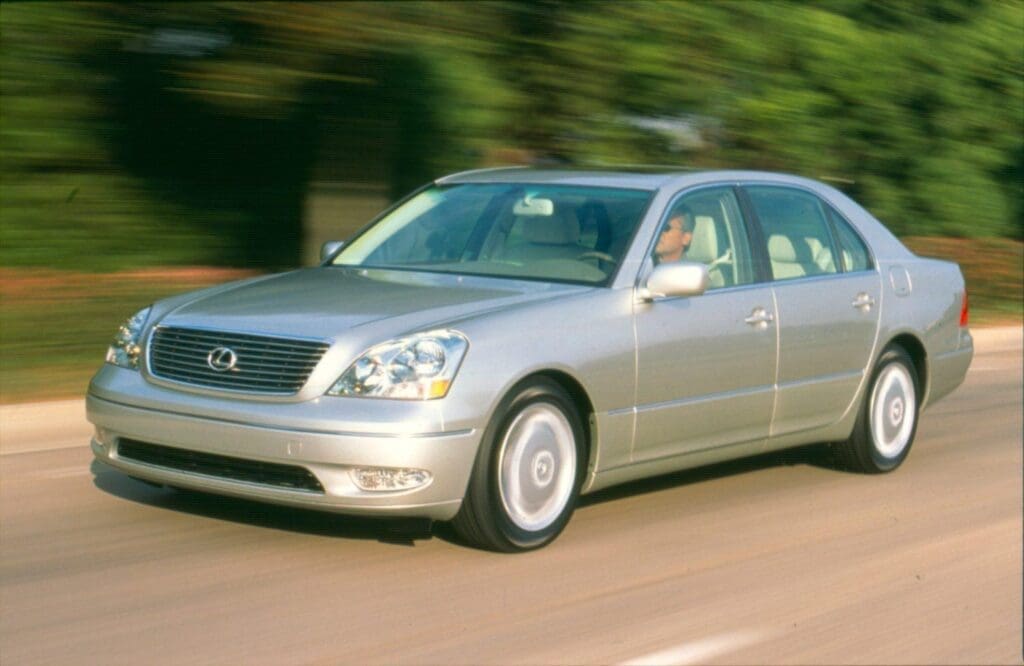The Lexus LS 430 is a Used Car Hidden Gem
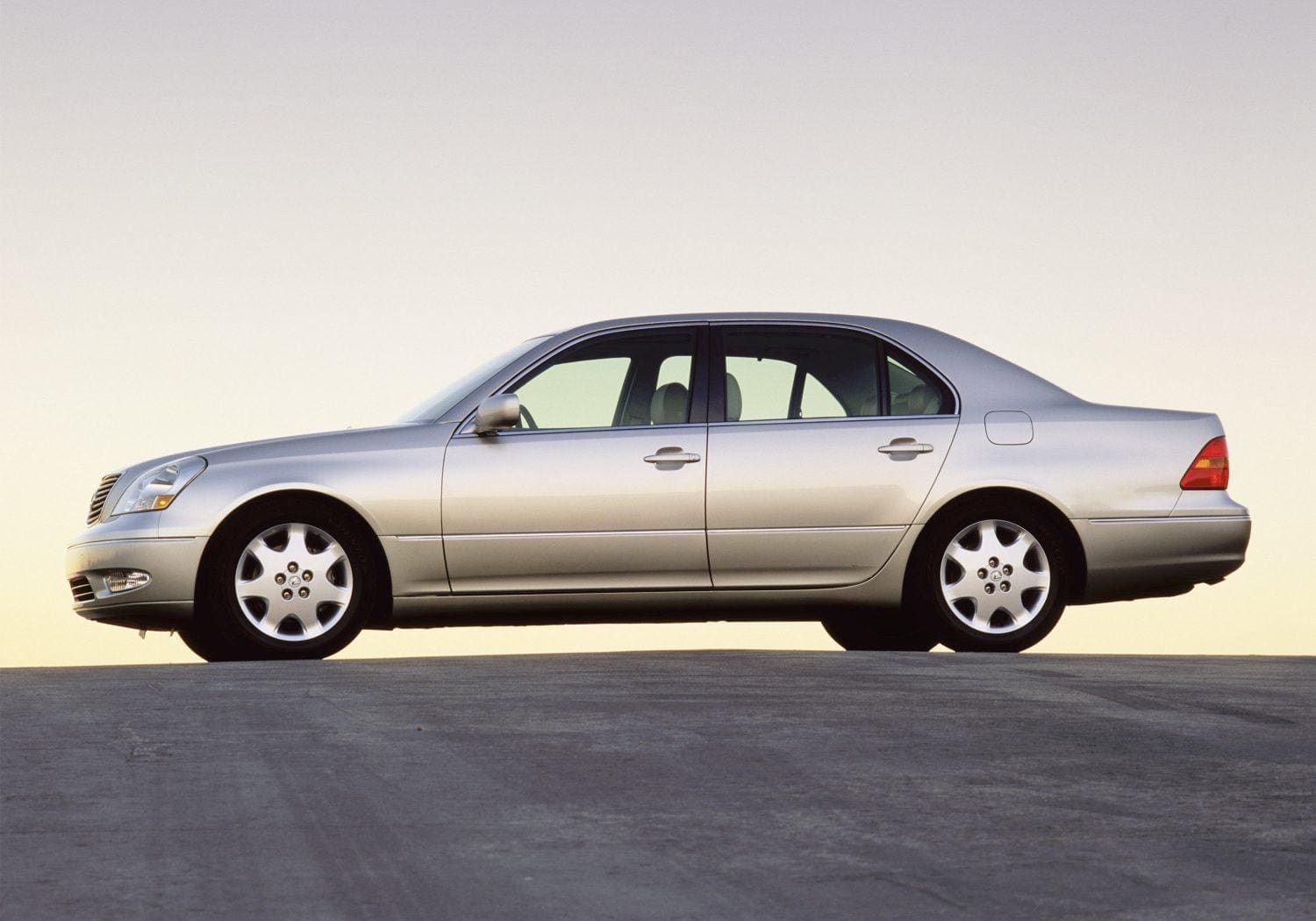
Contents
What’s the best car ever made? It’s a tough question. The answer depends largely on what you appreciate most in an automobile. It could be the Model T, which was the first car accessible to the masses. Or maybe the McLaren F1. Almost 30 years after its debut, it’s still one of the fastest cars ever made. Or perhaps it’s the Mercedes-Benz 600 Grosser, a limousine so opulent that, it seems, it could only be truly appreciated by corrupt heads of state.
But it could also be the Lexus LS 430. The third generation of Lexus’ flagship sedan combines luxury, engineering, and affordability in a way that arguably surpasses any vehicle to come before it. Or since.
Between 2001 and 2006, buyers purchased quite a few third-gen LSes — over 160,000 of them in the US, in fact. Many understandably used them quite extensively, piling on hundreds of thousands of miles. But there are still quite a few well-preserved examples out there. And after 15+ years of depreciation, even a pampered low-mile garage queen can now be had for as little as $10,000, making an LS from this generation not just a great car but a genuine used car bargain.
Introduction
Lexus stunned the automotive world with the 1989 debut of its first flagship model, the LS 400. After investing a reported billion dollars into the project, the automaker delivered a car that offered Mercedes-Benz levels of luxury and refinement with a sticker price that undercut the equivalent Benz by more than twenty grand.
Through the 1990s, Lexus kept their foot on the gas, continuing to add power, features, and quality to the LS. The second-gen model (1995-2000) offered subtle improvements to the highly-successful original. But with Mercedes and BMW both working hard to compete with the Japanese upstart, Lexus decided to go big for the LS’s third iteration (known internally as the UCF30).
Engineers and designers spent four years working on the new LS 430, which shares just 10% of its parts with the outgoing model. Changes include a bigger engine, a completely revised suspension, and a larger and more upscale cabin, said to be inspired by 5-star hotels like the Four Seasons. Its remarkably low 0.26 coefficient of drag (0.25 with the optional air suspension) makes it one of the most aerodynamic production cars ever made, even to this day.
When the LS 430 debuted in 2000 (as a 2001 model), it was larger, faster, and more luxurious than any Lexus to come before.
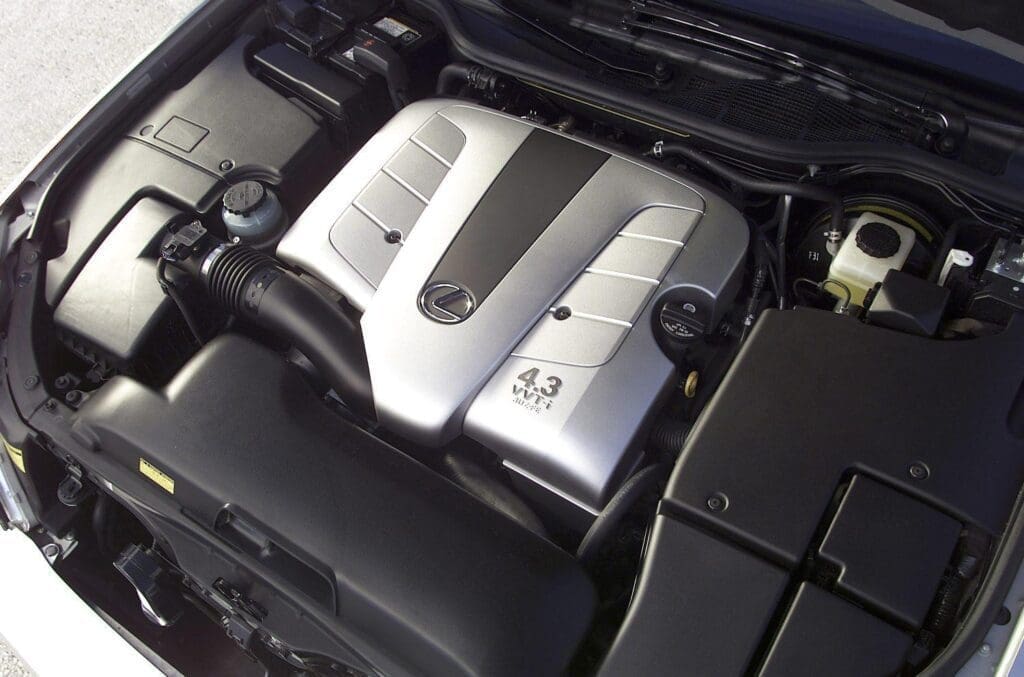
Engine and Transmission
Under the hood of the LS 430 is a 4.3-liter naturally-aspirated V8 engine (internal code 3UZ-FE) making 290 horsepower and 320 lb-ft of torque. On paper, that’s not much different from the the outgoing LS 400 (at 290 hp and 300 lb-ft). But the 430’s larger displacement, as well as its variable valve timing (VVT-i), help it to make more power at lower revs, which is exactly where you want it in a luxury car. It’s also clean-burning, earning the LS 430 an Ultra Low Emissions Vehicle (ULEV) rating from the Environmental Protection Agency (EPA).
The LS 430’s V8 is mated to a 5-speed automatic transmission, which carries over from the prior LS and continues to provide a silky smooth action when swapping cogs. Together, they deliver enough thrust to the rear wheels to get the big sedan to 60 mph in the low 6-second range. Lexus updated the gearbox to a 6-speed starting in 2004, improving 0-60 acceleration slightly to just under 6 seconds. Other than that, there were no changes to the LS 430 engine or transmission during its six-year production run.
Despite its large size and powerful engine, the LS 430 manages decent fuel economy ratings, thanks largely to its slippery shape. The EPA rates it at 16 mpg city and 23 mpg highway with either transmission.
One interesting quirk of the LS 430 powertrain: its “torque-activated” electronic control unit adjusts performance based on factors like engine and vehicle speed as well as throttle position. The result is that when you’re climbing a hill on the highway, for instance, you don’t have to mash the gas pedal. Instead, the engine adapts its output to power you up the slope.

Features and Options
Inside the cabin, prior LSes could occasionally reveal their Toyota roots through part-bin switchgear and plastic. Not so with the LS 430. It marks a leap forward in quality and refinement for the sedan. Like the luxury hotels it’s modeled after, the LS 430’s interior features acres of wood and leather trimmings. Settling into the front seats feels like you’ve just checked into a first-class flight on British Airways. And that’s no accident. It was Lexus’ benchmark.
The base LS 430 came very well equipped, with heated leather seats up front, an excellent stereo, a large sunroof, automatic climate control, and power everything. That’s no surprise. The real story is all of the newly-available options, which include the usual stuff like navigation but also next-level niceties (especially for 2001) like climate-controlled front seats, heated rear seats, parking aids, and a high-end Mark Levinson audio system.
Buyers opting for the second-highest trim level, “Custom Luxury,” were additionally rewarded with adaptive cruise control, self-closing doors, and laminated side glass (to reduce outside noise), while those who splurged on the top “Ultra Luxury” trim also added adaptive air suspension, heated and cooled reclining rear seats, rear-seat climate control, and even a backseat refrigerator. A ride in the back of an Ultra Luxury LS 430 (pictured below) is about as close as most of us will ever come to dictator status.
A Sports package was also offered on all but the top two trims, providing larger wheels and a slightly stiffer “Euro-tuned” suspension. It’s identifiable by a badge on each front fender placed just behind the wheel well.
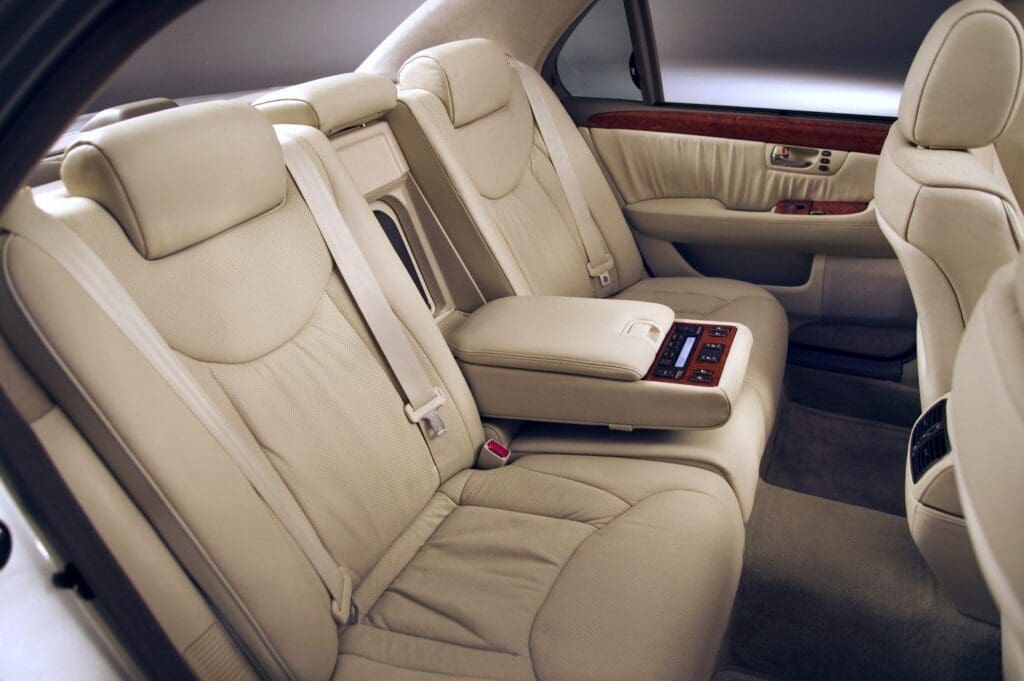
Model Year Changes
The LS 430 didn’t change very much during its six years of production, but Lexus did make a few notable updates here and there.
From its 2001 debut to the following model year, the only changes were a couple of new paint colors: Platinum Blue Pearl and Mystic Sea Opalescent. Then in 2003, the standard 16-inch alloy wheels increased in size to 17 inches.
The biggest changes came for the 2004 model year, when the LS 430 underwent a mid-cycle refresh. They include styling revisions front and back, a new 6-speed automatic transmission, and adaptive headlights which turn along with the steering wheel for better visibility at night. The optional navigation system was also upgraded to include a backup camera and Bluetooth connectivity, while the Mark Levinson audio system was improved with seat-optimized sound. Finally, the Sport package featured larger 18-inch alloys (pictured below).
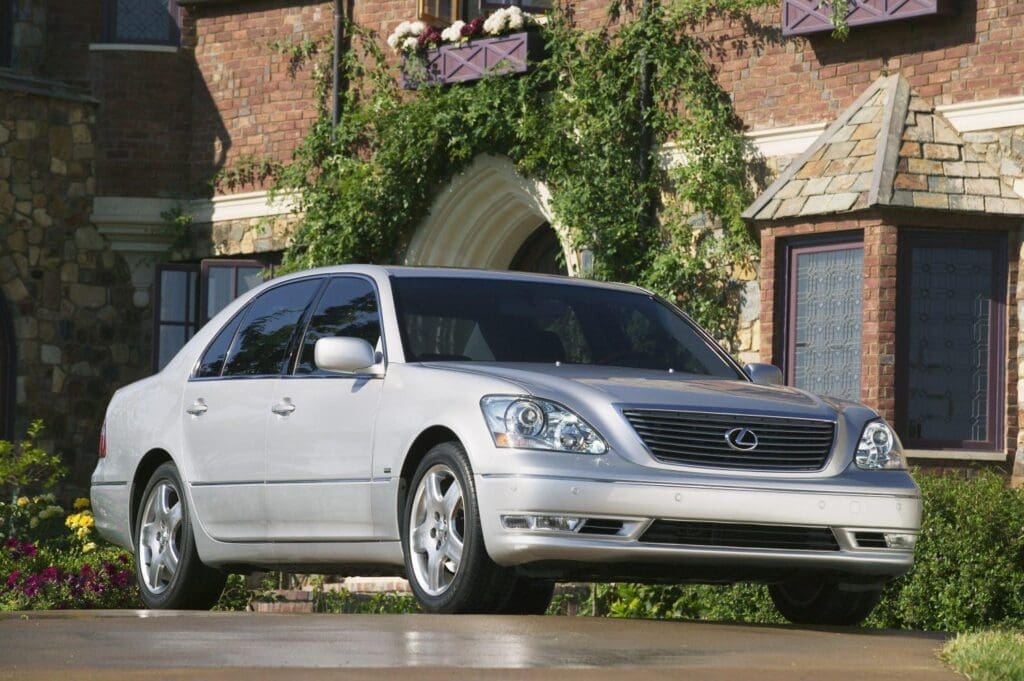
In 2005, Lexus offered its Pre-Collision System (PCS) as an option on the top two LS 430 trims (Custom Luxury and Ultra Luxury). A precursor to present-day self-driving aids, PCS uses radar technology to detect an impending crash and preemptively tightens seatbelts and preps the brakes for maximum stopping force. PCS also enables a more advanced version of adaptive cruise that works in all weather conditions (unlike the laser-based system available on lesser trims).
No significant changes were made to the LS 430 for its final year, 2006.
Problem Areas
Many consider the LS 430 one of the best engineered cars of all time, and well-maintained examples are capable of 200,000+ miles with relative ease. But there are still a few problem areas to be aware of.
It should go without saying that when you’re shopping for a used LS 430 you’ll want to look for an example with an exemplary maintenance history, which you can verify via service records or possibly just by studying its vehicle history report. This should include not only the basics like regular oil and filter changes but also a timing belt service, which is due at 90,000 miles. If the timing belt hasn’t been done, count on a roughly $1400 charge to replace it at an independent Lexus repair shop.
One of the biggest sore spots for LS 430 owners has been the optional air suspension, offered only on the Ultra Luxury trim. Its special dampers are somewhat failure-prone and can cost $1000+ per wheel to repair. Understandably, most facing this issue simply convert the air suspension to standard coils and shocks, which is a far more durable fix. Aftermarket supplier Suncore Industries offers a conversion kit at a cost of about $550 plus installation.
Other frequently-reported LS 430 issues are relatively minor. They include problems with the optional parking sensors, glitches with the power side mirror mechanism as well as the tilt/telescope function on the steering wheel, and speaker foam deterioration, which can be addressed with a replacement kit like this one from Simply Speakers.

Buying Tips
Prices for used LS 430s range from a low of around $5000 for a clean example with over 200,000 miles to as much as $15,000 for a post-refresh specimen (2004 or later) with under 50,000 miles. And if you want a museum-quality car, they’re out there. A 2004 LS 430 with just 10,000 miles sold recently on auction site Bring a Trailer for $25,050. Consider that a high water mark for the model.
We think the sweet spot for a used third-gen LS is $10,000 to $12,000, which buys you a truly excellent car with under 100,000 miles, a great service history, desirable options, and a clean appearance inside and out. You can occasionally find nice ones for even less than that — like this 53k-mile example for $8900 that we featured last year as a Used Car Find of the Day. However, such bargains are rare. These days, the market recognizes the incredible value offered by the UCF30 generation LS, and prices are only likely to go up.
Also, while it may be tempting to hunt for a car equipped with the top-of-the-line Ultra Luxury package, we advise against it. Most of the goodies on that trim benefit just the back seat passengers, so unless you’re planning to start a chauffeuring business it probably doesn’t make sense to spend extra money on that. Plus, doing so eliminates the possibility of having a problem with the air suspension, which was only offered with that trim.
Before you spend ten grand or more on a used LS 430, we highly recommend hiring a Lexus specialist to evaluate it. For about $250, they’ll provide you with a thorough inspection of the entire car. This can reveal major, deal-breaking issues, like hidden damage from an accident, or minor things that you can use as bargaining points, like worn brake pads. Either way, it’s easily worth the money to complete a professional inspection prior to finalizing any used car purchase.
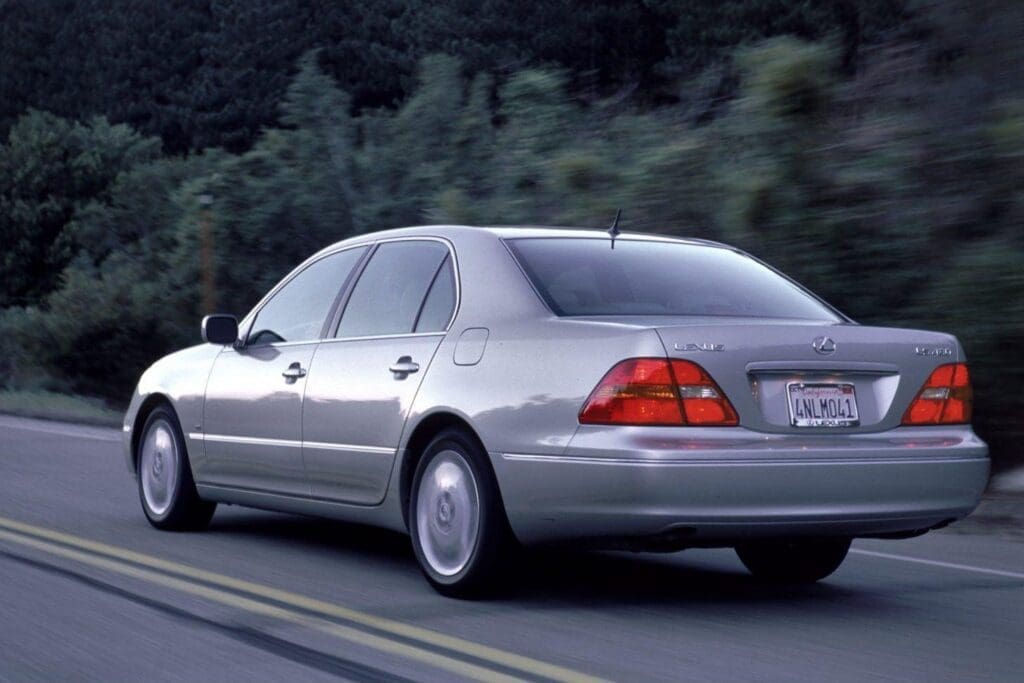
The Bottom Line
So is the LS 430 the best car ever made? Well, if you like the idea of a luxury sedan that pairs Mercedes-Benz refinement with Toyota reliability for the cost of a used econobox, then it probably is. No other car offers such a compelling combination of luxury, performance, and longevity for the price.
Photos courtesy of Lexus
